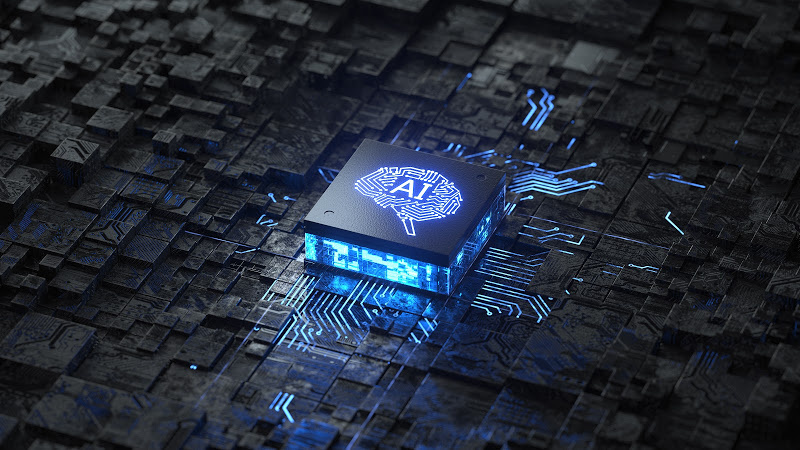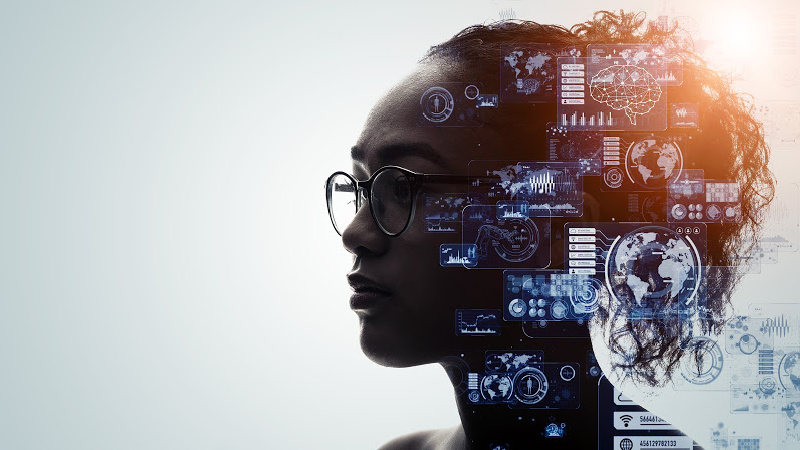From self-driving cars to personal assistants, AI (artificial intelligence) is rapidly progressing. AI tries to emulate some of the human intelligence components, including creativity, manipulation, learning, reasoning, and planning. As AI continues to change in terms of what it can do, it still focuses on making machines act and think like humans. Researchers and developers in AI are working towards enabling machines to interpret the world. Learning AI basics can help you understand the mechanism behind mobile check deposits, spam filters, ride-sharing apps, and facial recognition software.

AI meaning
AI is an expansive branch of computer science that focuses on building smart machines that emulate human intelligence. As an interdisciplinary science, AI uses multiple approaches such as machine learning and deep learning to solve real-life problems. In 1950, Alan Turin posed a question (“can machine think?”) in a research paper that laid a foundation for modern AI. The research paper, titled “Computing Machinery and Intelligence.” established the vision and goal of AI.
AI, at its core, seeks to prove whether machines can think. It involves approaches aimed at simulating or replicating human intelligence in machines. Debates and questions that examine the capability of machines to think and act like humans continue to pop up. There’s also no singular, universally accepted definition of AI.
The Basics of AI
It’s amazing how AI and its approaches make it easy for people to travel around and get simple tasks done for them. Social media use also continues to benefit from the basics of AI as platforms such as Facebook and Twitter improve virtual interpersonal interactions. Insurance companies, media companies, legal institutions, and financial institutions are also using AI to their advantage. All these examples suggest that AI’s reach is broad and impactful.

AI falls into two categories, which include Narrow AI and Artificial General Intelligence. AI also manifests itself through machine learning and deep learning. Discussed below are these concepts in detail:
Narrow AI
Also known as Weak AI, Narrow AI is a type of AI operating within limited contexts while simulating human intelligence. As the most successful AI realization to date, it focuses on the performance of singular or limited tasks. It also sets a solid foundation for neural networks that emulate consciousness and sentience. Common examples of Narrow AI basics include IBM’s Watson, self-driving cars, personal assistants (like Alexa and Siri), image recognition software, and Google search.
Artificial General Intelligence (AGI)
Also referred to as Strong AI, AGI is the type of AI portrayed in movies through robots. As a human, AGI is a machine equipped with general intelligence for solving any problem. AI basics researchers are continually looking for ways to create machines with human-like intelligence that can do any task. Some of their efforts prove successful, while others proved futile.
Most of the advances in AGI aim at creating machines with a full set of human-level cognitive abilities. While this goal is yet to come to reality, it is the muse behind dystopian science fiction. These movies display super-intelligent robots on a quest to overrun humanity.

Machine Learning and Deep Learning
Most of the advances in Narrow AI rely on deep learning and machine learning. AI is a combination of intelligence and algorithms trying to emulate human intelligence. Machine learning is one of these algorithms. Deep learning, on the other hand, is one of those machine learning techniques.
Machine learning helps input data into a computer and employs statistical techniques to help the computer solve problems. In this case, the computer doesn’t need pre-programming (lines of written code) to be better at problem-solving. That’s because machine learning uses both labelled data sets (supervised learning) and unlabeled data sets (unsupervised learning).
As the core concept in AI basics, machine learning is progressive. The machine has to learn the previous information and create new knowledge through inference. By learning this information, it can appropriately react to new inputs in the future.
Deep learning is a highly specialized subset of machine learning that uses a biologically-inspired neural network architecture to process inputs. The neural networks comprise several hidden layers for data processing. As data goes through these “deep” layers, the machine makes connections and weighs inputs for the best results.

Both deep learning and machine learning are in an inclusive relationship when talking about AI. Deep learning mainly focuses on the algorithms of neural networks. Researchers made significant progress in natural language processing, speech recognition, audio recognition, and image recognition through this concept. Other fields that benefit from machine learning include board game programs, medical image analysis, machine translation, and social network filtering.
Summing up
As a broad discipline, AI facilitates consumer finance, auto-driving, speech recognition, and image recognition, among other technologies. All these technologies come into existence thanks to machine learning and deep learning. In this case, AI basics allow machines to acquire certain intelligence using approaches such as machine learning and deep learning, as discussed above. Finally, these concepts will help you know how AI affects facets of daily life.